Washi
和紙
Washi
CATEGORIES
Washi, is a generic term for paper that has been used extensively in Japan from long ago as an integral part of life. It is made from distinct raw materials and developed through unique techniques. Even today, various types of hand-made washi are produced throughout Japan and are used widely in Japanese painting and print works, in design works as modeling material, and in household furnishings such as paper screens and sliding doors.
Washi is commonly made from the bark and the long and flexible bast fiber of paper mulberry, mitsumata shrub (Edgeworthia chrysantha) or ganpi tree (Diplomorpha sikokiana). In the main manufacturing process, the raw materials are steamed and stripped of their outer bark, soaked and boiled in water, and the fibers are then beaten into small pieces. The resulting pulp is mixed in water with a sticky liquid called “neri” extracted from the root of sunset hibiscus, etc. Neri ensures that the pulp does not bond together in the water and helps it to spread to the appropriate degree. This mixture is then scooped up onto a screen called “sukiketa” and shaken back and forth (sideways too with Mino paper) to produce the paper. This method is referred to as “nagashi-zuki” and is unique to Japan. Because the paper contains water at this point, it is pasted onto a wooden board and dried naturally to produce the final product. The strength and beauty of washi comes from the structure of the paper in which the fibers are intertwined tightly and evenly. This is due to the development of neri and nagashi-zuki techniques, and, more importantly, the skills of the washi craftsman.
During China’s Later Han period (105 CE), Cai Lun perfected the method of making hand-made paper. This method later made its way through Central Asia and the Middle East into Europe, while in the opposite direction, it spread through the Korean Peninsula and into Japan during the Asuka period. This is the origin of Japanese washi. The oldest surviving washi artifact is the paper used in the family register document stored at the Shosoin treasure house in Nara, and is believed to date back approximately 1,300 years to 702 CE (2nd year of the Taiho era) when the Taiho Code was enacted. Compared to mass-produced Western paper, there is a limit to the amount of washi that can be produced by hand, but it is unmatched in durability and preservative qualities. Incidentally, the name “washi”, which literally means Japanese paper, was given to domestically produced paper passed down through generations because, in the Meiji era, paper imported from abroad was referred to as “yoshi” meaning Western paper.
In art, washi is mainly used as the canvas or its backing paper (reinforcement) for Japanese painting works, as block printing paper, and to store art work. In the design field, it is used in lighting and interior items, in book bindings, and for various fashion uses. Washi is also used in calligraphy works and for mounting pictures, as well as in restoring old paintings, etc. It is thus a material that is closely linked to artistic expressions.
Washi can be purchased at washi shops and art supply stores.
- Mitsumata-based washi

 Close-ups
Close-ups- Kōzoshi-based washi
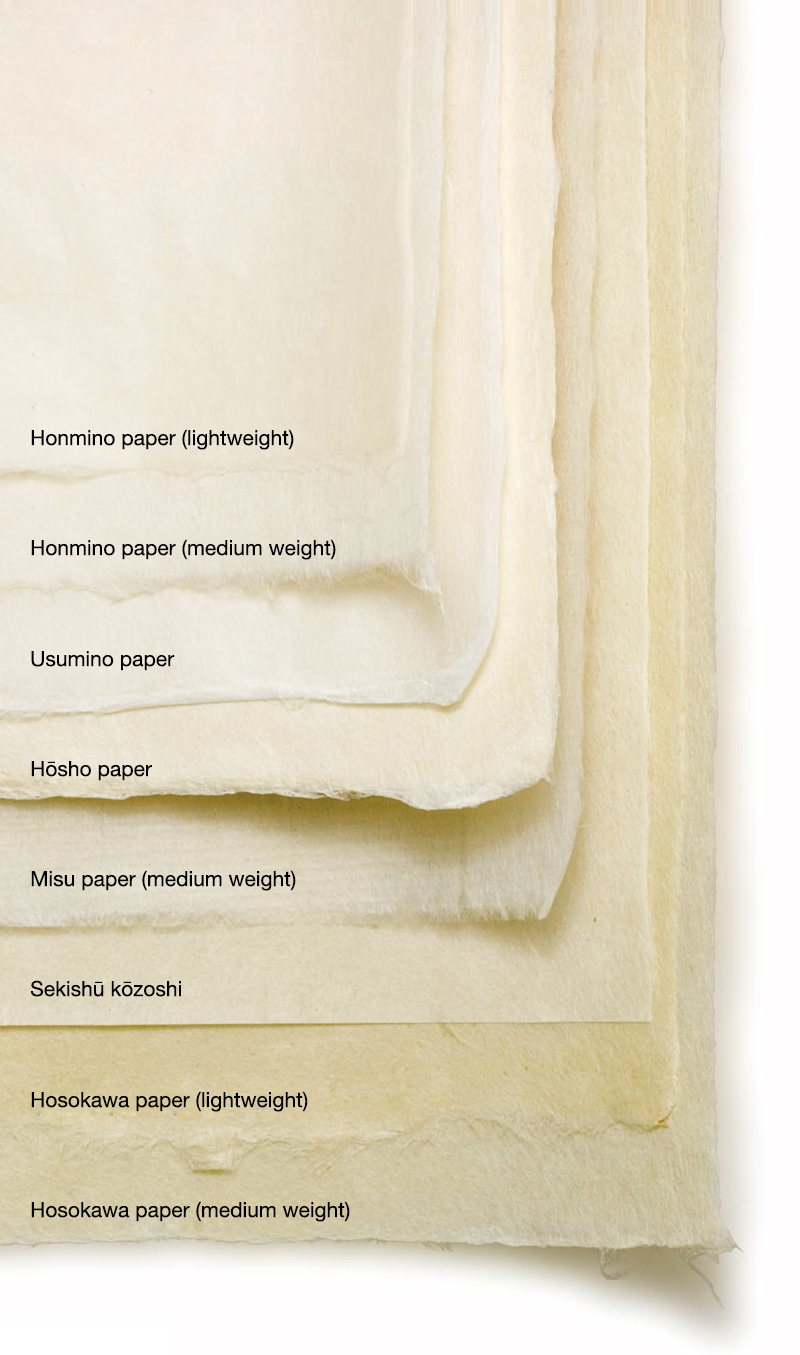
 Close-ups
Close-ups- Ganpi-based washi
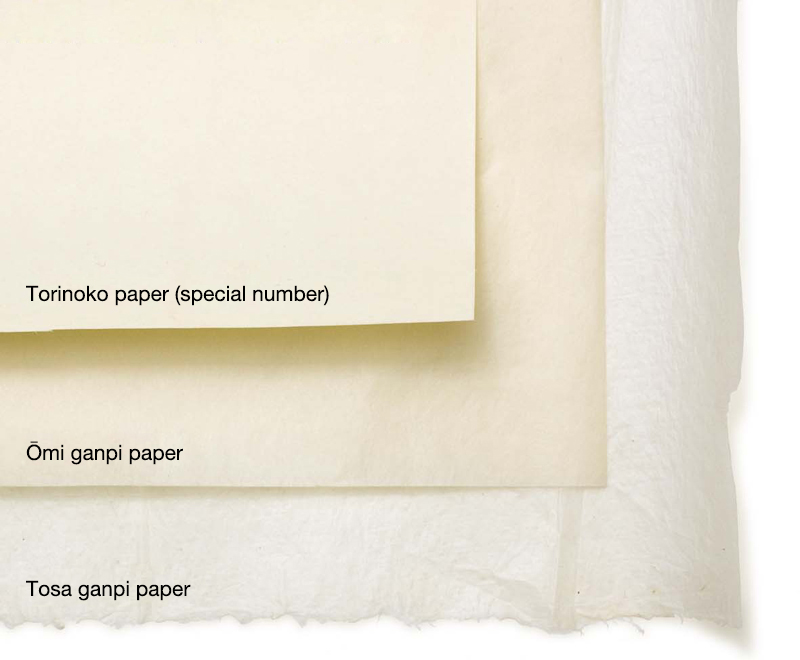
 Close-ups
Close-ups- Hemp-based washi
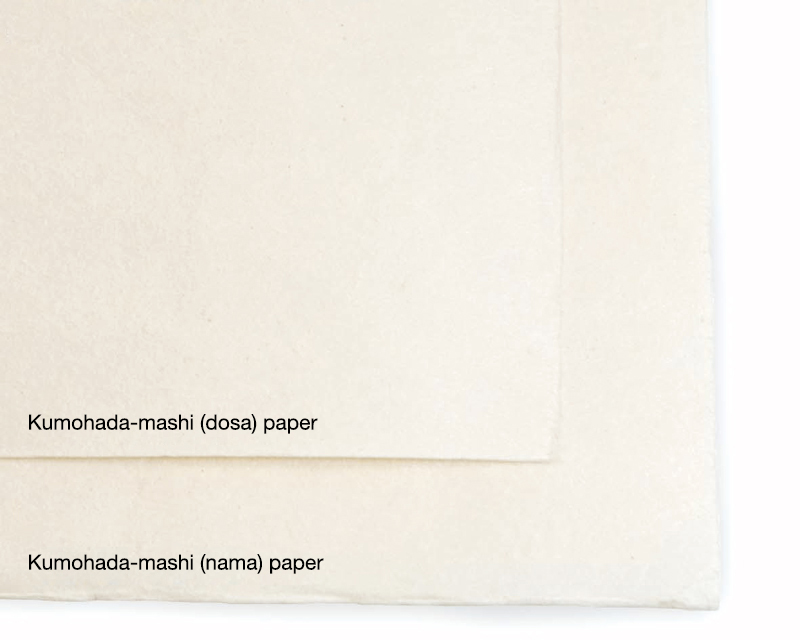
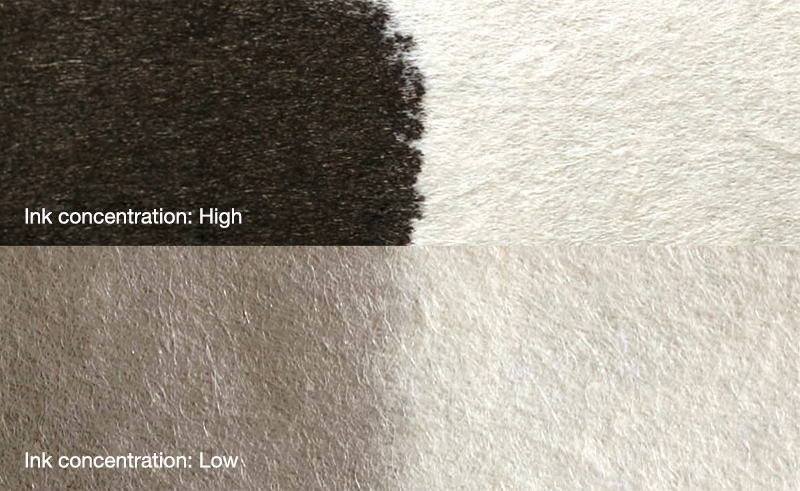 Sumi ink on kumohada-mashi (nama) paper (close-up)
Sumi ink on kumohada-mashi (nama) paper (close-up)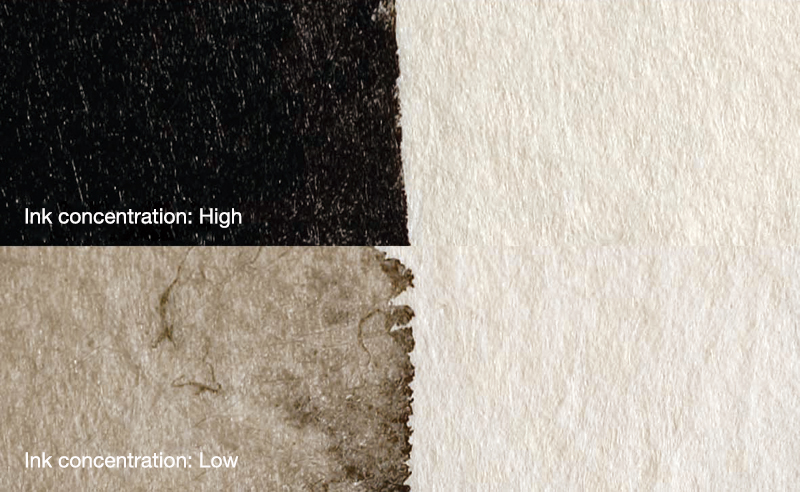 Sumi ink on kumohada-mashi (dosa) paper (close-up)
Sumi ink on kumohada-mashi (dosa) paper (close-up)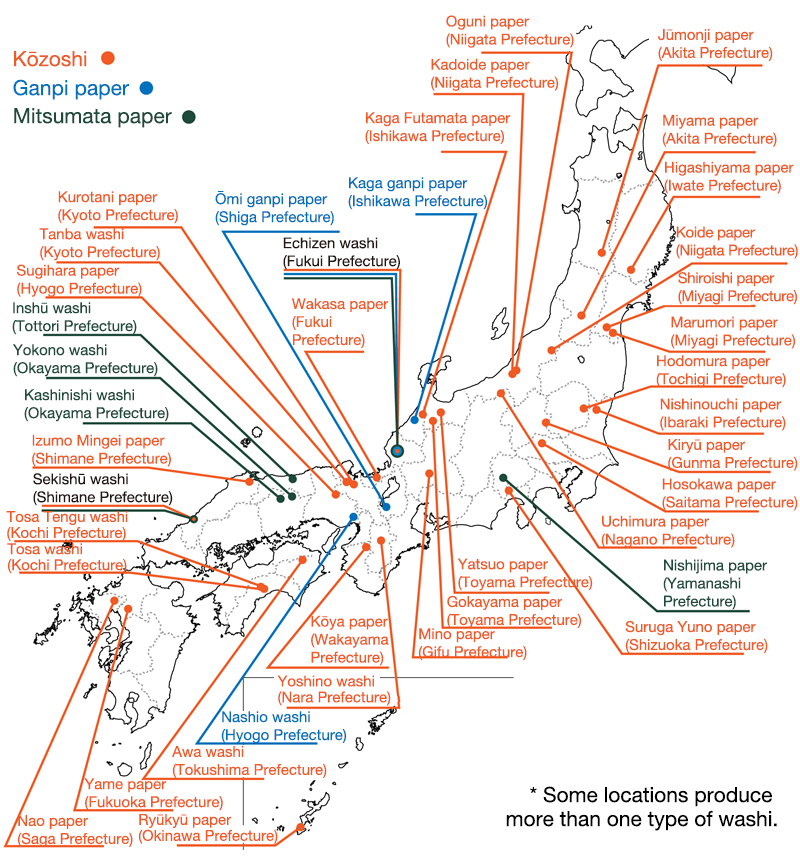 Major types of washi currently in production
Major types of washi currently in production
